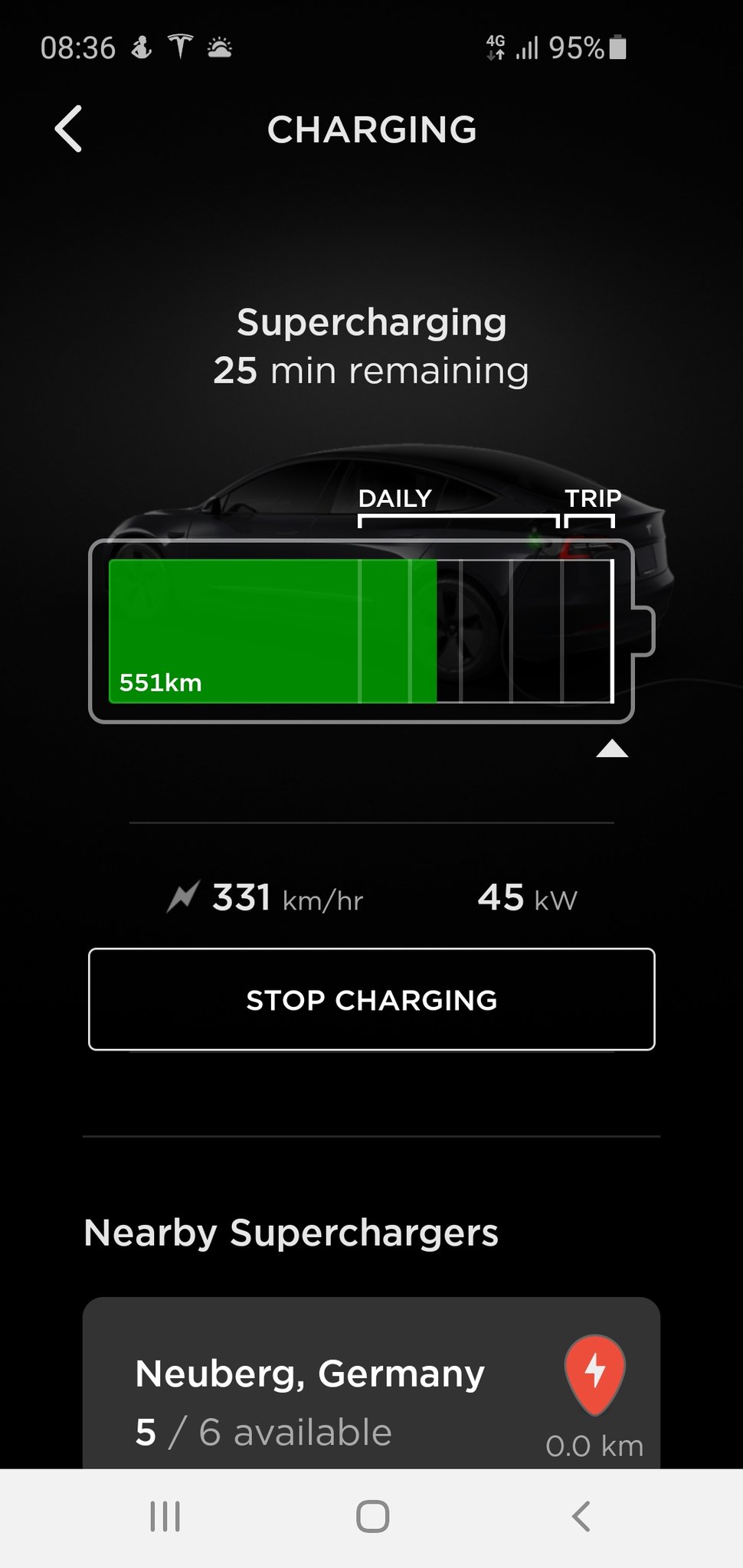Basically you have to take a video or a picture of the energy tab like this one, before the update and after the update:
imgur.com
See how the lines converge around 152.5Wh/km and then both the range on the right and the battery range converge to the same value? This is the value we need before and after the update.
No, it is not good news, not even slightly. Displayed range is irrelevant. The only thing it is useful for is to track degradation, but if Tesla keeps changing the constant and moving the range - this is actually bad news, because it hides degradation. This is the same thing that happened to RWD people in 2018 who to this day think they have "5%" degradation, because Tesla just moved the goal post by decreasing their consumption constant (the straight line I show in the video above) - whereas their real degradation is more lilely in the 10% area.
Early indications, 2019 vs 2021 driven one after eachother with the heating off, show that there is no efficiency gained between the 2019 and 2021 motors and it is all range numbers manipulation (I will have a more definit answer very soon).
Basically, if Tesla "increases" the range without any significant motor efficiency, this is just moving the theoretical consumption lower - has no implications for you in real life.
They also in the past for 2019 models, purposely reduced the displayed range, so that they can increase it later. In the 2019 models they calculated 76.5kWh for capacity, even though the batteries were 77.8kWh.
Now, they simply use the whole capacity and don't care about initial degradation (of 1-2kWh in the first few thousand miles)
This is like in an ICE car - if you have one with 50litres and one with 55litres of tank, otherwise absolutely identical, but both show the same range because the car on the left has a theoretical lower consumption (but they are absolutely the same cars, even the weight is the same, because the tank on the 50 litre car is more heavy has the same volume - basically LG batteries - same weight, less capacity)
Hope this makes it more understandable.




